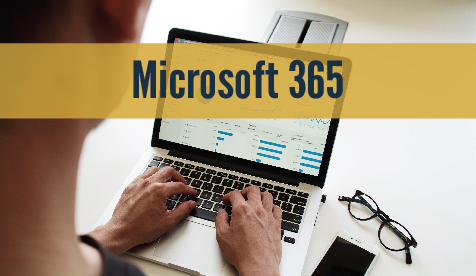Remote Work Resources
Resources for Employees
General
Campus-specific
| Columbia | Kansas City | Rolla | St. Louis |
|---|---|---|---|
|
|
|
|
|
Q&As
How much bandwidth do I need for successful videoconferencing?
You'll need a connection capable of download speeds of at least 1.5 megabits per second (Mbps). Please see the .
What services require a Virtual Private Network (VPN)?
Most of the technology resources available to our faculty, staff and students do not require a VPN. However, some on-campus IT resources require the use of (VPN), a tool that provides encryption between your computer and campus resources. All university laptops come with the Cisco VPN client installed. If you are using your personally owned computer, please contact your IT support team for instructions about downloading the VPN client.
The campus resources that require a VPN when working off campus include:
- Remote Desktop Access to Workstations that remain on campus
- Access to Network File Shares / Network Drives
- (Set up call forwarding and managing voicemail)
- Some departments have specialized systems that need VPN.
Will I be able to access MyHR, People Soft and other tools from home?
Most of the tools you use everyday are easily accessed online. PeopleSoft (includes MyHR and Finance), OneDrive, Webmail, Email, Cherwell, Canvas and Jabber all are readily accessible. These tools do not require a (VPN) connection, but it is recommended to connect securely through a VPN if you are working and using a public, unsecured wireless network.
Tips for Secure Zoom Teleconferencing
Posted 04/16/2020
Updated 08052020
The use of Zoom makes remote communication possible, yet as its popularity skyrocketed, it became a target for bad actors. We take the security of your academic technology very seriously and want to ensure you have the best technology options for teaching, learning, research, outreach and administrative work.
We feel that Zoom is acting quickly on privacy and security concerns, and we are confident the platform is both safe and effective. We are monitoring Zoomâs updates to security and privacy, and encourage you to take an active role in your accountâs security settings to help further prevent and mitigate uninvited guests or inappropriate actions by others in Zoom meetings.
To secure a Zoom session, either a passcode or waiting room is required on new Zoom meetings created in the umsystem.zoom.us and umsystemprotected.zoom.us domains. Beginning on Aug. 6, 2020, security options enabling waiting rooms and passcodes will be enabled by default. Users can choose which of the two security options will work best for that particular meeting by unchecking one setting or the other. Please refer to the for more details on navigating Zoom following this change and other recent security updates.
Please consider the following steps to help mitigate teleconference hijacking threats:
- Do not share meeting links on public forums or social media. Provide the link directly to specific people.
- Enable passwords for your meetings. Do not share the password publicly.
- Use Zoom waiting rooms. Hosts allow waiting participants into the meeting.
- Do not disable the default screen sharing setting that is set to âHost Onlyâ to allow participants to share their screens until you are sure only the intended participants are present.
- Make sure you are using the most updated version of Zoom (and all software applications) on all your devices.
The University of ÃĻßäapp System will continue to keep updated the information about tools and resources on .
Hear from Zoomâs CEO directly; about their security measures as well as plans to monitor and review over the next 90 days.
Reviewed 2024-11-01

